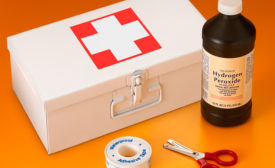Workplace Safety Culture
Smile - You're on candid camera
NLRB: Employers prohibited from banning cell phone photography by employees
May 20, 2015
Advertisement
Reducing Your Environmental Impact with Sustainability Solutions
April 29, 2015
Never miss the latest news and trends driving the safety industry
eNewsletter | Website | eMagazine
JOIN TODAYCopyright ©2024. All Rights Reserved BNP Media.
Design, CMS, Hosting & Web Development :: ePublishing




